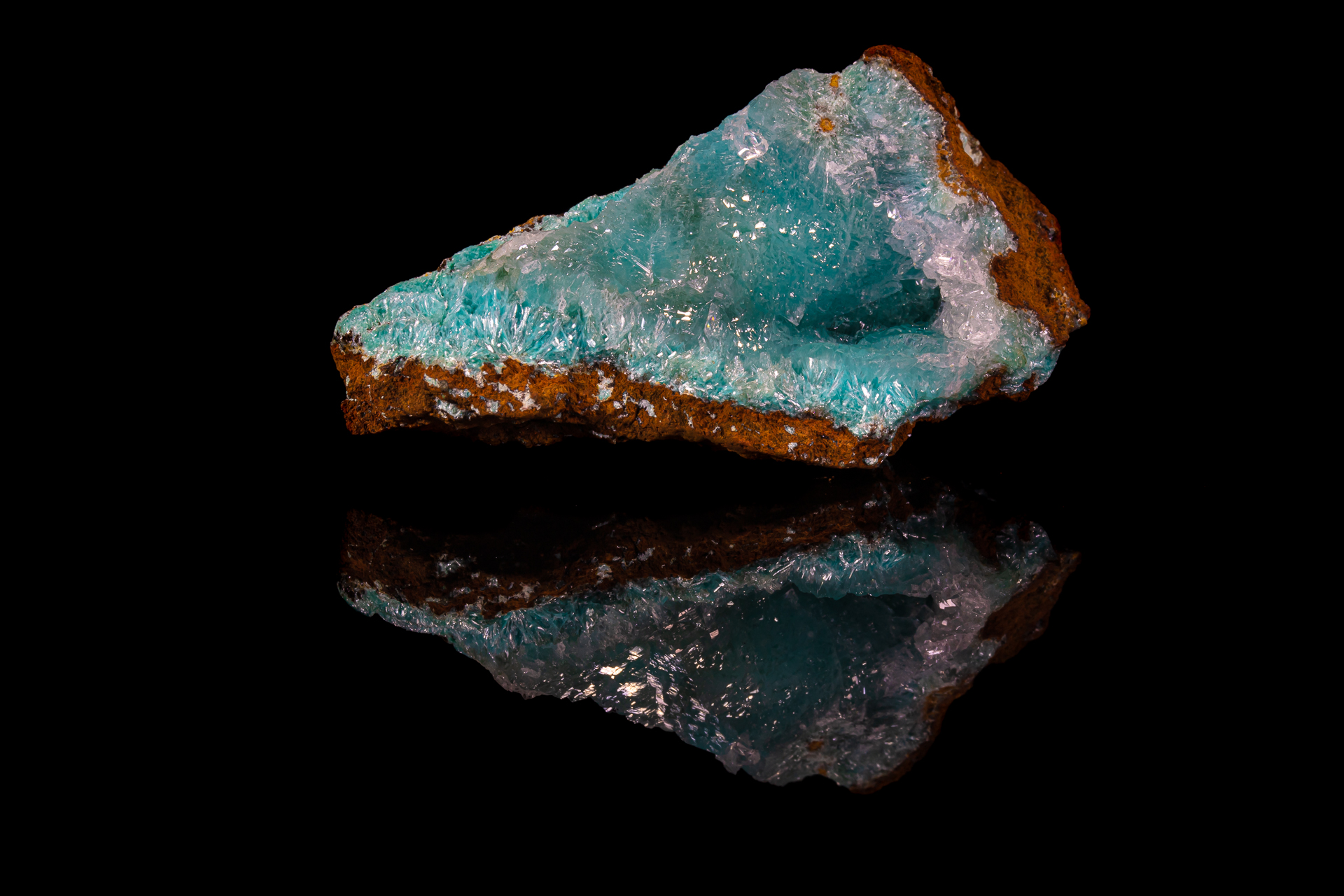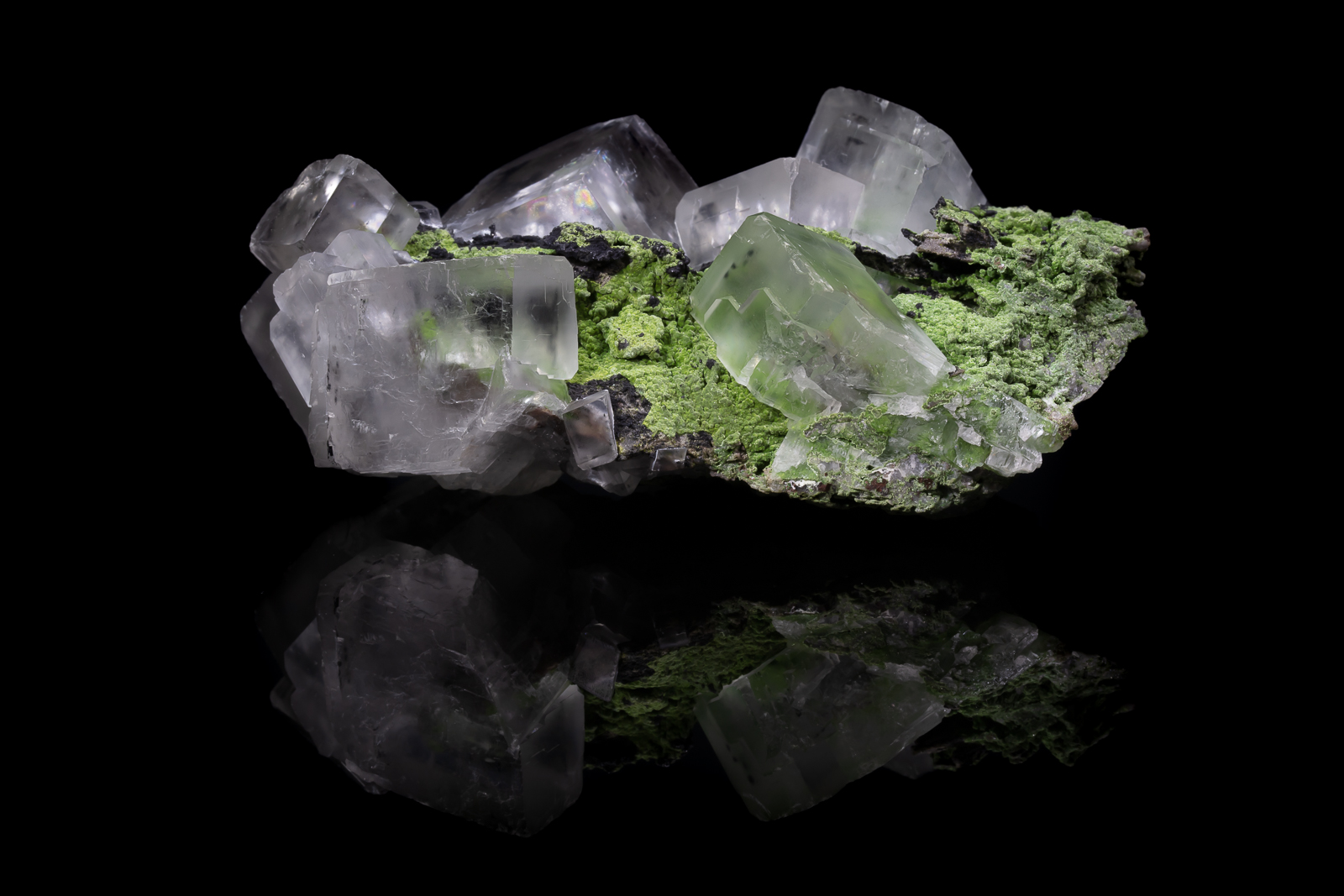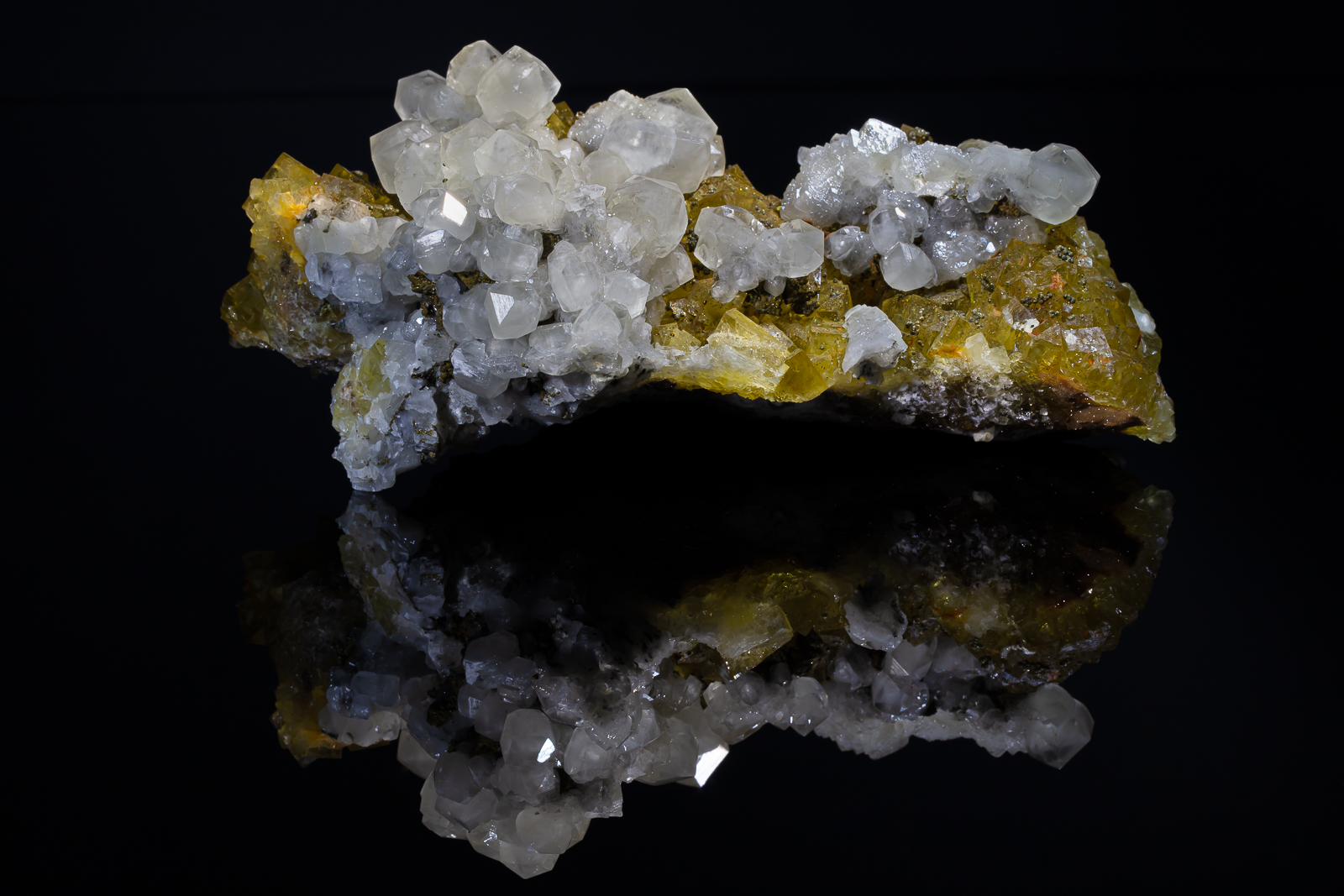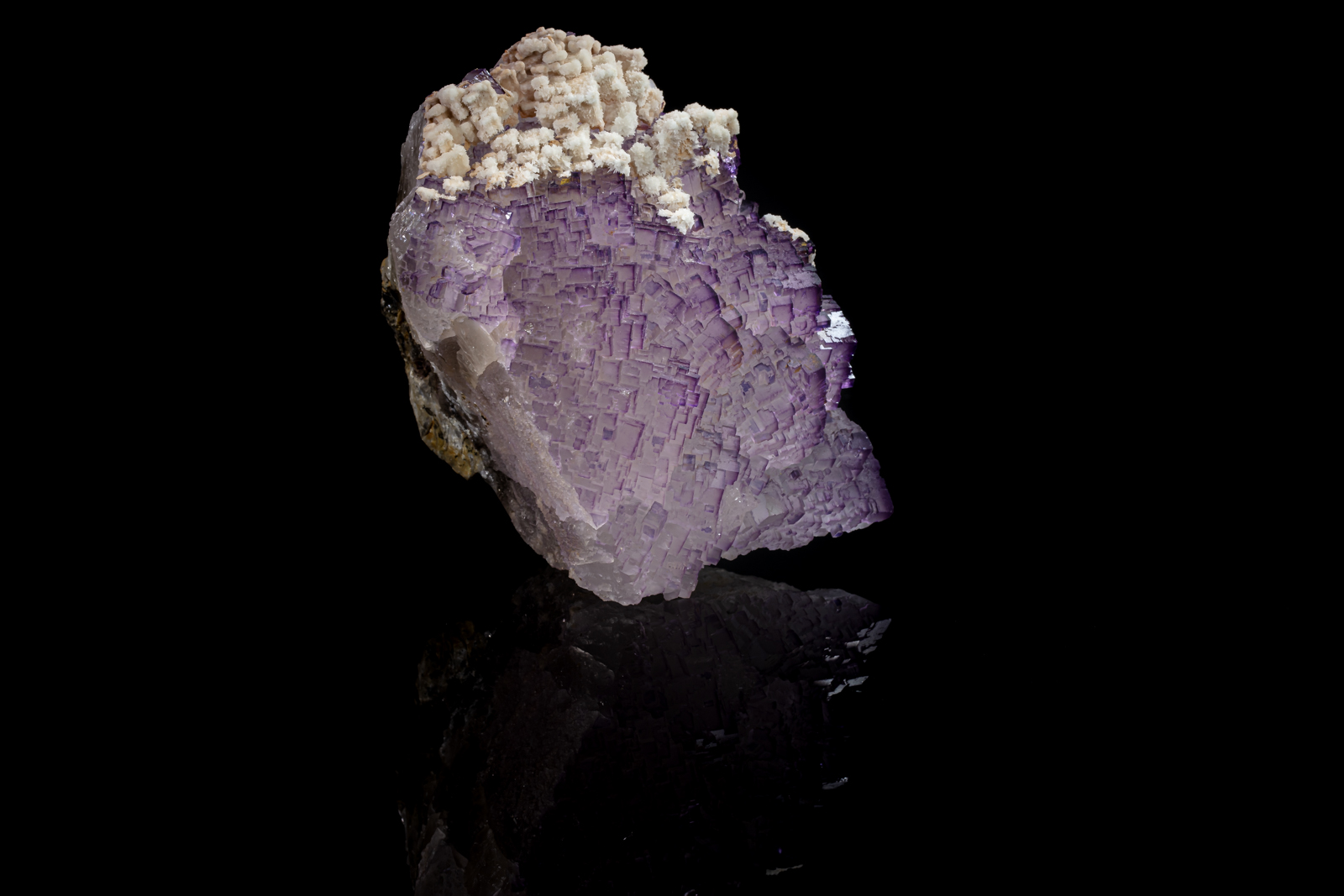Calcite
Formula: CaCO3
Species: Carbonates
Colour: White, Yellow, Red, Orange, Blue, Green, Brown, Gray etc.
Lustre: Vitreous, Sub-Vitreous, Resinous, Waxy, Pearly
Hardness: 3
Specific Gravity: 2.7102
Crystal System: Trigonal. Its crystals occur most often as scalenohedral and are commonly twinned, sometimes forming heart-shaped butterfly twins. Crystals showing rhombohedral terminations are also common, and calcite readily cleaves into rhombohedra.
Member of: Calcite Group, Calcite-Rhodochrosite Series.
Name: Ancient name. Named as a mineral by Gaius Plinius Secundus (Pliny the elder) in 79 from Calx, Latin for Lime.
Polymorph of: Aragonite, Vaterite
Although over 70 carbonate mineral species are known, three of them, calcite (calcium), dolomite (magnesium) and siderite (iron) account for most of the carbonate material on earth’s crust. A very common and widespread mineral with highly variable forms and colours. Calcite is best recognized by its relatively low Mohs hardness (3) and its high reactivity with even weak acids, such as vinegar, plus its prominent rhombohedral cleavage in most varieties. Crystals with steep rhombohedral or scalenohedral terminations are known as dogtooth spar, those with shallow rhombohedral terminations are called nailhead spar, and highly transparent crystals are sometimes called optical spar, a reference to their use as polarizing filters, Calcite perfectly demonstrates the optical property of double refraction: light passing through is split into two components, giving a double image of any object viewed through it. Although it forms spectacular crystals, most calcite is massive, occurring either as limestone or marble. It is also found as fibers, nodules, stalactites and can be found in many geological environments.

 Copyright Charles Camarda - www.camardavisualstudio.com
Copyright Charles Camarda - www.camardavisualstudio.com
 Copyright Charles Camarda - www.camardavisualstudio.com
Copyright Charles Camarda - www.camardavisualstudio.com Copyright Charles Camarda - www.camardavisualstudio.com
Copyright Charles Camarda - www.camardavisualstudio.com Copyright Charles Camarda - www.camardavisualstudio.com
Copyright Charles Camarda - www.camardavisualstudio.com Copyright Charles Camarda - www.camardavisualstudio.com
Copyright Charles Camarda - www.camardavisualstudio.com Copyright Charles Camarda - www.camardavisualstudio.com
Copyright Charles Camarda - www.camardavisualstudio.com
 Copyright Charles Camarda - www.camardavisualstudio.com
Copyright Charles Camarda - www.camardavisualstudio.com Copyright Charles Camarda - www.camardavisualstudio.com
Copyright Charles Camarda - www.camardavisualstudio.com Copyright Charles Camarda - www.camardavisualstudio.com
Copyright Charles Camarda - www.camardavisualstudio.com Copyright Charles Camarda - www.camardavisualstudio.com
Copyright Charles Camarda - www.camardavisualstudio.com Copyright Charles Camarda - www.camardavisualstudio.com
Copyright Charles Camarda - www.camardavisualstudio.com


 Copyright Charles Camarda - www.camardavisualstudio.com
Copyright Charles Camarda - www.camardavisualstudio.com Copyright Charles Camarda - www.camardavisualstudio.com
Copyright Charles Camarda - www.camardavisualstudio.com

 Copyright Charles Camarda - www.camardavisualstudio.com
Copyright Charles Camarda - www.camardavisualstudio.com Copyright Charles Camarda - www.camardavisualstudio.com
Copyright Charles Camarda - www.camardavisualstudio.com
 Copyright Charles Camarda - www.camardavisualstudio.com
Copyright Charles Camarda - www.camardavisualstudio.com
 Copyright Charles Camarda - www.camardavisualstudio.com
Copyright Charles Camarda - www.camardavisualstudio.com
 Copyright Charles Camarda - www.camardavisualstudio.com
Copyright Charles Camarda - www.camardavisualstudio.com